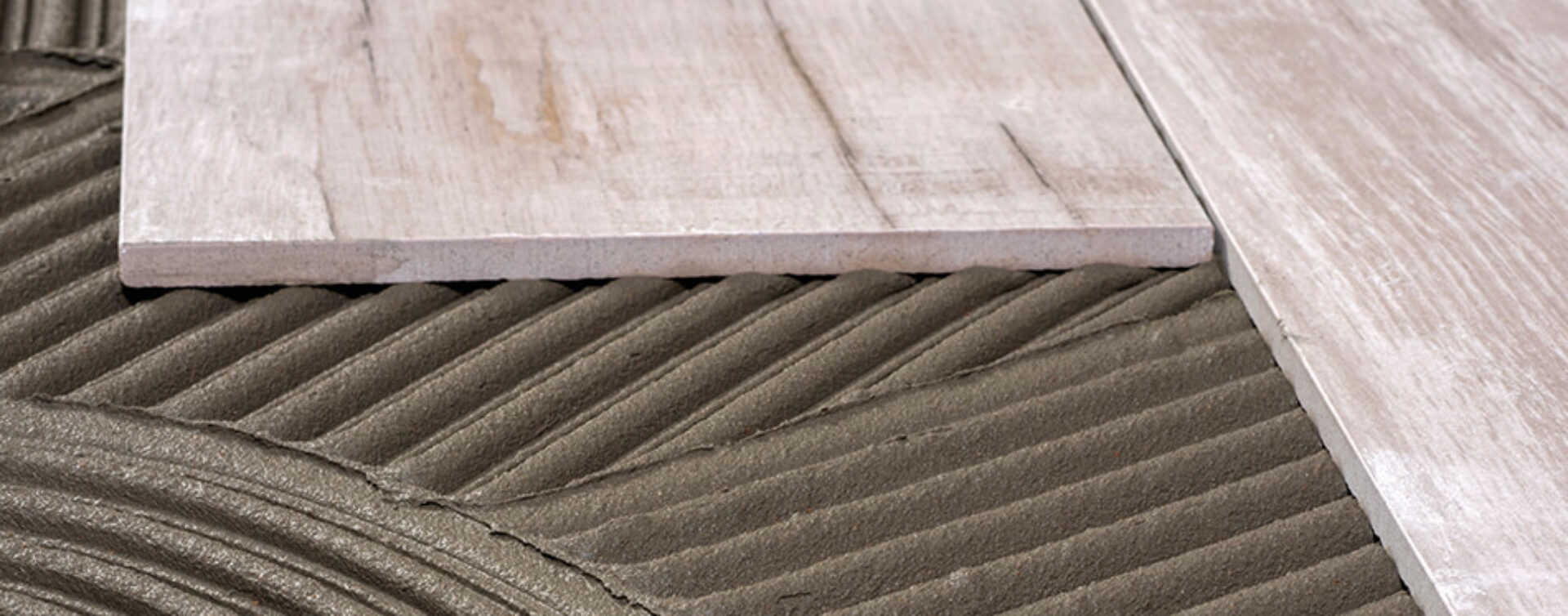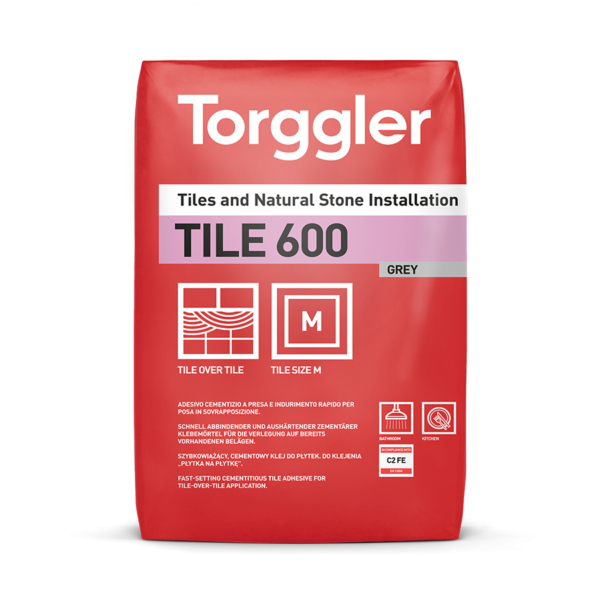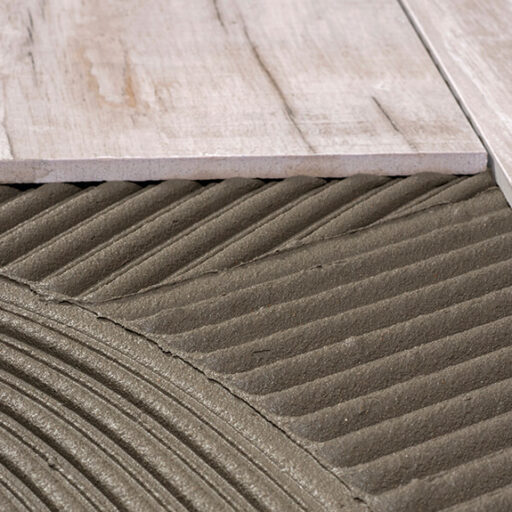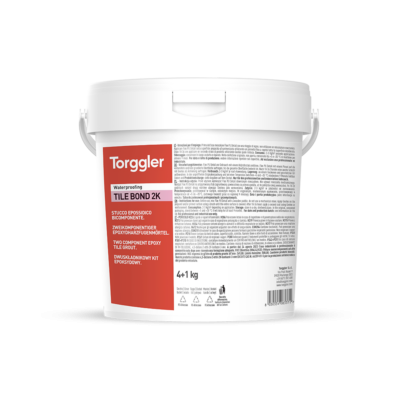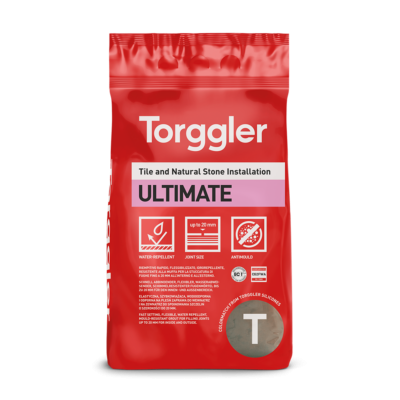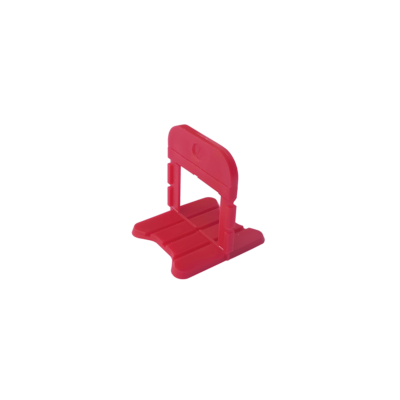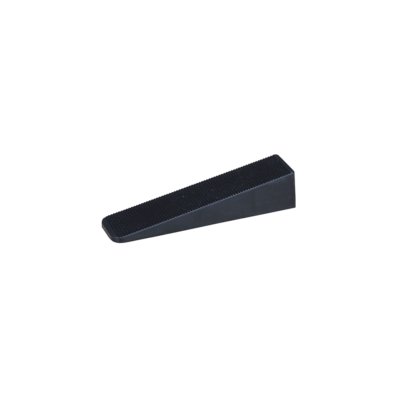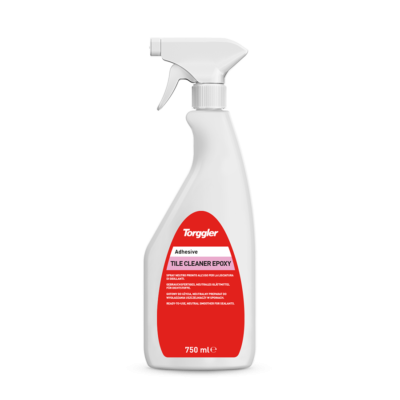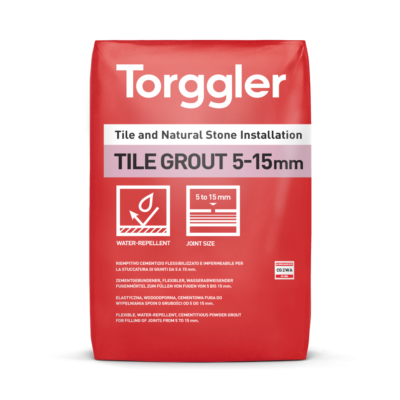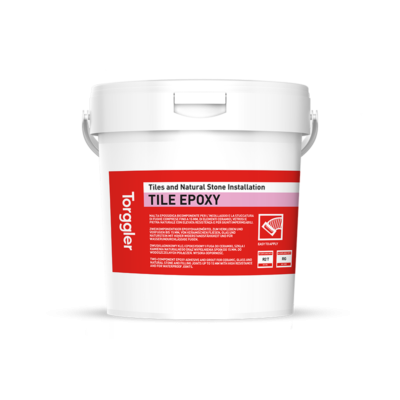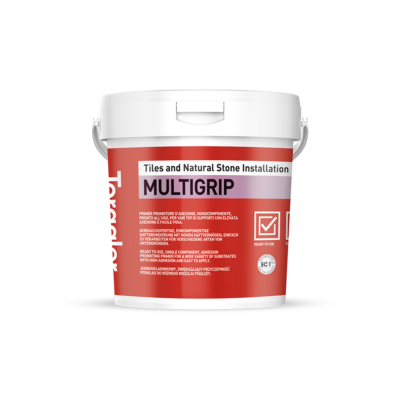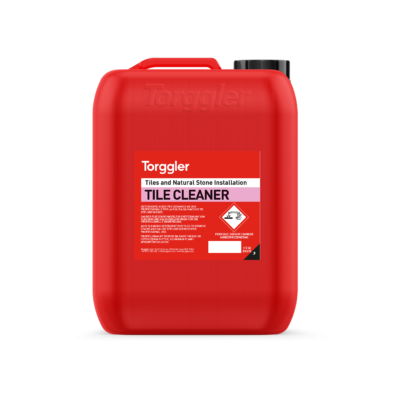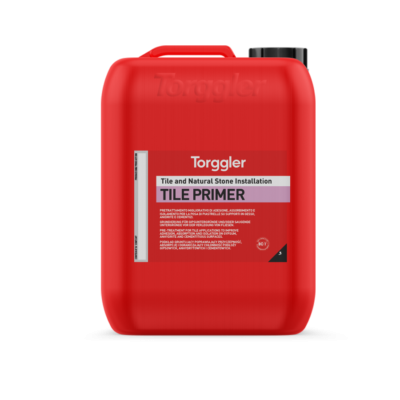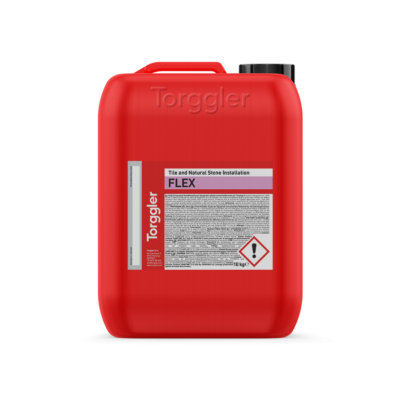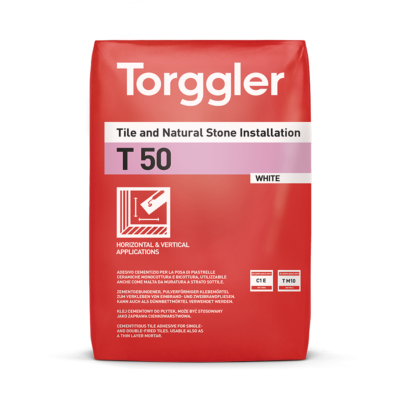Tile 600 is a grey adhesive cement powder consisting of a special mixture of rapid setting/hardening, high-resistant cement, graded aggregates. The mixture is a special formula designed for overlaying. After mixing with water, you have an easy-to-work adhesive mix with good flexibility and excellent adhesion suitable for all types of substrate, especially old floors and ceramic tiled surfaces or surfaces covered in natural stone. Thus, under normal hardening conditions, mechanical strength develops quickly and floors can be walked on about 4 hours after laying. Thanks to its long open time, laying tiles is easy even in warm, windy climates. It resists freezing/thawing cycles. Tile 600 is classified as a cementitious adhesive of class C2 FE as per EN 12004 standard.
Instructions for use
Preparation
The surfaces to be covered must be suitably dry, resistant, solid and regular, clean and free of oils and greases, dust, loose material, dirt of any kind and any traces of old paint. The surfaces must also be sufficiently cured and free of significant shrinkage. As a general rule, traditional cement bedding with normal setting and hardening must be cured for at least 28 days. Cement or cement lime plasters must be dried for at least 14 days. Major surface imperfections and irregularities such as level differences, cavities, gravel pockets and eroded or deteriorated points must be repaired in advance and filled out with a self-levelling smoothing product such as Livellina 0-10 or Livellina 5-30, or with a suitable mortar such as ACS Restauro, ACS Rinnova or ACS Monorasante. Very porous, flaking or dusting surfaces with poor mechanical strength must be treated in advance with Tile Primer.
Mixing the product
Mix Tile 600 with 28-30% clean water (7.0-7.5 litres per 25 Kg bag) as follows: pour almost all the mixing water required into a suitable container. Then add the powder product, slowly, and mix at the same time using a low speed electrical drill with mixer attachment. Once you have added all the powder product, pour in the rest of the water and mix until the product is smooth and lump-free. Make sure you remove all unmixed lumps of material from the sides and the bottom of the container. Allow the mixture to stand for about 5 minutes and then mix again briefly. The adhesive mix prepared in this way has a pot life in the container of about 45 minutes under normal conditions (at 20 °C). Higher temperatures reduce the pot life, lower temperatures increase it.
Application
If subject to direct sunlight, that is, high temperatures, wet the surface with a sponge to cool it and then wait until all the surface water has evaporated. Apply the adhesive with an appropriate toothed trowel. The size of the trowel teeth depends on the type and size of the tile to be glued: total coverage of the back of the tiles must be guaranteed. For better adhesion, first apply a thin and uniform layer of adhesive on the surface using the smooth part of the toothed trowel and then apply, immediately, a second layer of the thickness required using the toothed part of the trowel. Apply the tiles, pressing them slightly and moving them crossways slightly. Use the buttering-floating method to apply tiles with a high relief pattern on the back in case of outdoor applications, especially in areas subject to wide variations in temperature or freezing/thawing cycles. Proceed as follows. Apply the mixed adhesive with a toothed trowel to the substrate. Also spread a layer of adhesive with a trowel on the back of the tile and smooth it off so that it is flush with the relief pattern. Provided the quantity of adhesive spread out is sufficient, you now have adhesive-tile contact extended along the entire gluing surface (this condition is essential for laying floors and surfaces exposed to freezing cycles and considerable stress from water). Only lay the tiles within the time interval during which the adhesive spread out is still fresh and sticky, that is, before a surface film forms. This time interval is known as the “open time” of the adhesive and depends on the environmental conditions. The open time of Tile 600 is longer than 30 minutes at 23 °C and 50% relative humidity. High temperatures and conditions of direct sunlight and wind or very porous and absorbent surfaces may reduce the open time considerably. Low temperatures, high environmental humidity and non-absorbent surfaces may increase the open time. If the open time has passed and the adhesive spread out has formed a surface film, you must use the toothed trowel again to break the film and “freshen up” the surface. Do not wet the surface as this will create a film of water which prevents adhesion between the tile and the adhesive. The tiles do not normally require wetting before laying. However, tiles with dusty back should be cleaned by dipping them in clean water for a few seconds. For gypsum surfaces, pre-treatment with Tile Primer is required.
Warnings
Do not use on the following:
- wood and wood conglomerates, metal surfaces, rubber, PVC, linoleum and the like.
- unstable substrates subject to deformation and high mechanical stress.
For applications on gypsum or anhydrite surfaces, pre-treatment of the surface with Tile Primer is required. If you have any doubts or queries about this type of application, contact our Technical Office.
